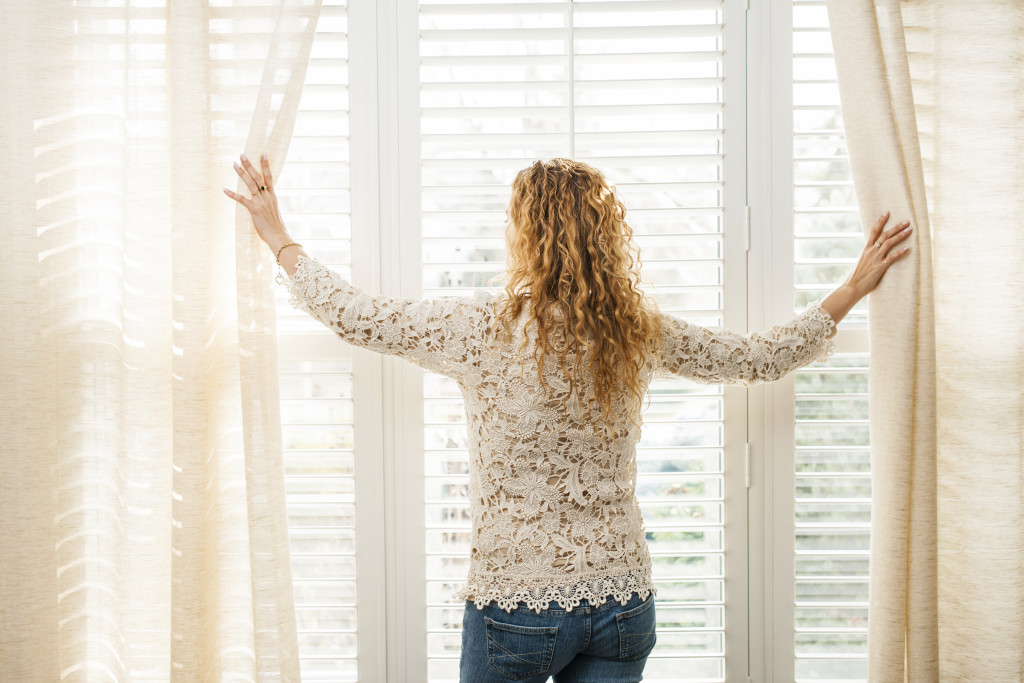- Increasing natural light in a home is beneficial for improved energy efficiency, aesthetic appeal, and better moods.
- To maximize natural light, the lighting design should prioritize it over artificial lighting.
- Properly position windows and doors, add rooflights, use shades and curtains, and upgrade existing windows.
- Reflective surfaces, like mirrors and light-reflective paint, help reflect and redirect natural light in darker areas of the home.
- Remove dust and debris from windows by cleaning them regularly for improved natural light.
With energy costs on the rise, many homeowners are looking for ways to maximize natural light and improve energy efficiency in their homes. Take a look at how you can do this in your home and reap the benefits.
Importance of Natural Light in a Home
Natural light is a valuable resource in any home. It offers so many perks that you can’t get from artificial lighting, such as:
- reducing electric bills
- providing vitamin D
- promoting healing
- improving moods
Aside from these, it also increases the value of a home by providing natural aesthetics and views. With all of these benefits, it is easy to see why maximizing natural light in your home is essential.
Prioritize Your Lighting Design
The most effective way to increase natural light in your home is to design a lighting plan that prioritizes natural light over artificial lighting. This can be done by:
Properly Positioning Your Windows and Doors:
Position your windows and doors in a way that allows for maximum natural light to enter the home. Also, consider the position of furniture and other items when deciding where these should be placed. Moreover, you may remove obstacles like trees that prevent light from entering. However, ensure that you have a permit for this activity, if necessary.
Adding Rooflights:
Adding rooflights can allow an abundance of natural light to enter your home. There are two main types of rooflights — flat and pitched. Each has its own purpose and may come framed or frameless, so make sure to pick one that suits your home and needs. Suppose you are on a budget and still want an aesthetic look for your home. In that case, a high-quality framed flat rooflight is for you. It provides a more modern look and much sturdier construction than the frameless option.
Using Shades, Curtains, and Blinds:
Another excellent way to maximize natural light in your home is to use shades, curtains, and blinds. These can control the amount of light coming into your home while also adding a layer of privacy. You could also go for blackout blinds or thermal curtains to reduce glare and create a cozy atmosphere during the day. They also help to keep your home cool during the summer months.

Upgrade Your Windows
Windows are one of the primary sources of natural light in a home. Therefore, upgrading or replacing your windows is important if you want to increase the amount of natural light entering your home. Here are some types of windows you may consider:
Larger Windows:
Replacing your windows with larger ones can help to increase the amount of natural light entering your home. They can also help improve a room’s overall appearance and make it look more inviting.
Double-paned Windows:
These windows have two glass panes, separated by a space filled with gas or air. This helps to reduce heat transfer and noise while also increasing the amount of natural light entering your home.
Energy-efficient Windows:
Today, many energy-efficient windows are available on the market to help reduce your energy bills. They can also improve the amount of natural light entering your home. For example, Low-E films or windows are designed to reflect infrared light, which helps to reduce heat transfer.
Add Reflective Surfaces
To further maximize natural light in your home, you can use reflective surfaces to redirect the light into darker areas of your home.
Mirrors and other reflective surfaces are great for this purpose, as they help to reflect the light and increase its brightness. Consider adding a few mirrors in strategic places around the home, such as near windows or walls that feel particularly dark.
You can also add light reflective paint to your walls and ceilings, which will help to reflect natural light throughout the room. This is especially beneficial for homes with low ceilings or small windows, as it helps to make the most out of the natural light available.

Clean Your Windows Regularly
Regularly cleaning your windows will help to maximize natural light. This is because dirt, dust, and debris can block sunlight from entering and reduce the amount of natural light in your home.
Clean your windows at least once a month with warm water and mild soap, then let them dry completely before closing them back up. You should also use a lint-free cloth to avoid leaving streaks on the window.
Furthermore, consider hiring a professional window cleaner for more complicated jobs, such as those on higher floors or buildings with irregularly shaped windows. They can assure you of a thorough and effective job with their expertise.
Using these strategies for maximizing natural lighting options in your home improves the appearance of interior spaces. It also helps save money on energy bills by reducing reliance on electricity for lighting purposes. After all, improving energy efficiency is an important goal for many homeowners. Additionally, taking advantage of free renewable resources like sunlight is one way to achieve this goal.

